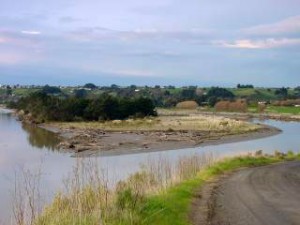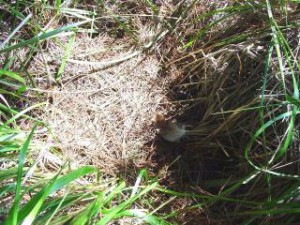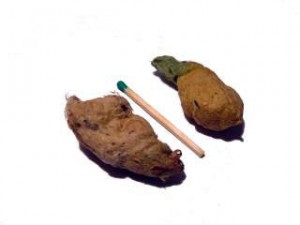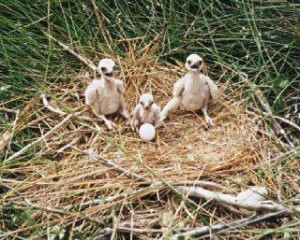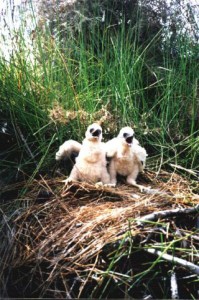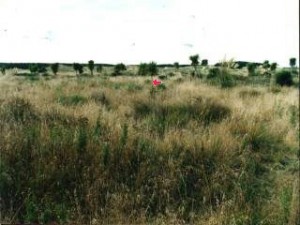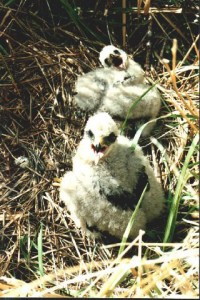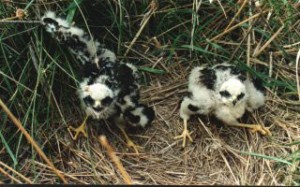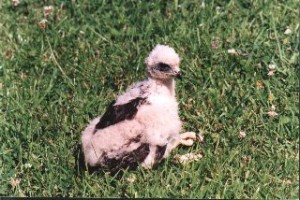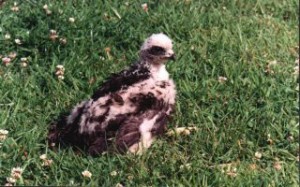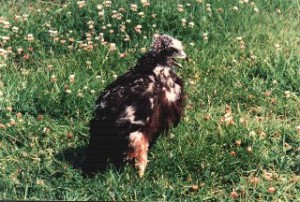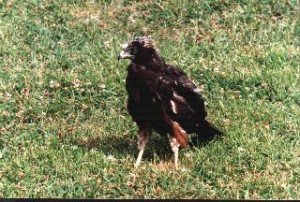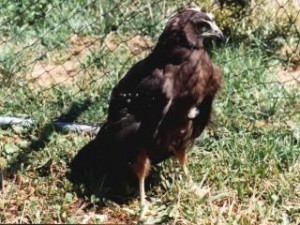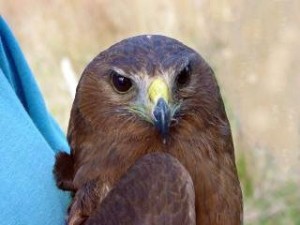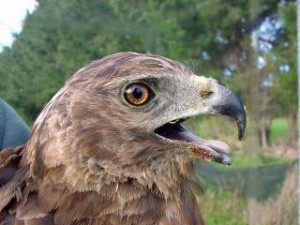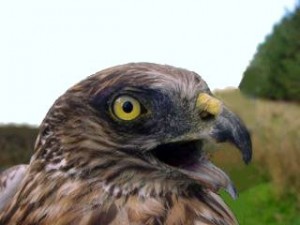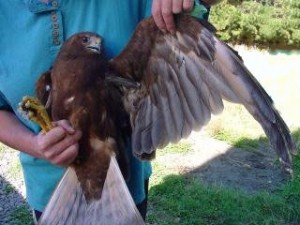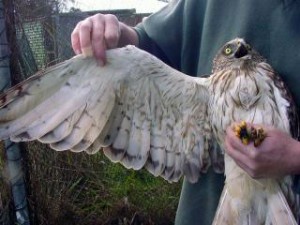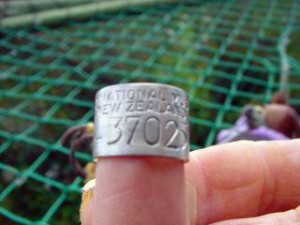Order : Falconiformes
Family : Accipitridae
Latin : Circus approximans
Australasian harriers are the most common birds of prey in New Zealand. They are a familiar sight to many of us as they fly slowly along the roads looking for road kills.
Australasian harriers (commonly called hawks) are native birds not introduced, as many people believe. They sleep on the ground at night in groups in wetland or swampy areas. The sites where the birds meet are called roosts. At the roost pictured (which is an island in our local river) the birds generally use the grassy area in the foreground.
They make a bowl shaped hollow in the metre high grass and sit directly on the ground.
Anywhere between 5 and 15 birds can be seen arriving at the roost in the evening.However some roosts can contain more than 150 birds.
Harriers regurgitate a small pellet (called a cast) of indigestible bone and fur regularly. Casts found at the roost in the “sleeping bowls” can be analysed to tell us what the birds have been eating.
Their diet varies with the seasons but can include rabbits, hares, possum, rats, mice, birds, eggs, frogs, hedgehogs, lizards and large insects. They will also eat dead sheep when food is scarce.
Harrier nests are raised pads of vegetation on or near the ground. The female will lay around 4 elliptical white eggs on alternate days between October and December. She will incubate the eggs which takes 31 to 34 days, while the male brings her food. The chicks hatch 2 days apart. By the time the third or fourth chick has hatched, the size difference can be quite dramatic. Often the female will stop brooding before the last egg has hatched. At this nest site, on an island in a farm dam, the chicks are 4, 6 and 8 days old.
One week later the smallest chick had gone.
These photos were taken in 1999. The previous year two chicks were also sucessfully raised at the same site. In 2000 just after a nest was built the island was flooded and the nest was destroyed. The pair did not try to build another nest on the island that year.
At another site, a wetland reserve just south of Wanganui, there is a harrier nest at the base of the cabbage tree.
The chicks at the nest are between 2 and 2½ weeks old.
The same chicks a week later.
The following week both chicks had been killed and partially eaten by a wild cat.
Approximately 90% of the wetlands in NZ have been drained and wildlife including harriers are forced to find less favourable places to live and nest. Harriers often nest in hay paddocks where the long grass resembles a wetland. Unfortunately when the hay is cut the chicks are only a few weeks old and are either killed by the machinery or the parents abandoning the nest. This young chick was found in a hay paddock and is approximately 2 weeks old.
For the first few weeks the chicks sit down as their legs are still developing and are not strong enough to support the body. The same chick at 3 weeks.
4 weeks
5 weeks
At 6 weeks the bird was flying and had to be put in a small cage for the photograph.
There are many factors that affect the survival of the young chicks such as weather, predators, injury to or the loss of a parent and disturbance at or around the nest site. Food availability also plays a big part. When food is scarce, younger chicks are unable to compete against older siblings and will starve.
Up to 3 chicks can fledge – that is reach flying stage from a nest site. After they leave the nest the mortality rate in the first year can be as high as 75%. Many will be hit by cars as they scavenge on the road, but other hazards such as power lines, possum & ferret traps, disease, poisons and starvation also kill a number. Although illegal, the shooting of harriers still occurs.
Young birds are dark brown in colour with a dark eye. When the males are approximately 2 years old the eye colour changes from brown to orange and at 3 years from orange to yellow.
Brown eye
Orange turning Yellow
Yellow
As the birds moult (the process where new feathers regularly replace old feathers) the body colour changes, getting lighter as the bird gets older.
Young bird
Old bird (probably around 15 years old)
Females are about a third larger than males. They go through the same colour changes (eyes and body feathers) but at a slower rate. All birds have a white blaze at the back of the head but the size of the blaze varies greatly.
Many harriers have been banded. This is where a numbered metal band is placed on the birds leg and details sent to the banding office at the Department of Conservation in Wellington.
From banding recoveries when the birds are either found dead or recaptured ( and released again) we have learnt that harriers can live up to 20 years of age in the wild and some travel between the north and south islands.
Photos: Bruce Peterson, Tom Teasdale, Ormond Torr, Ashley Wigglesworth
DEFINITIONS
Native birds:
Birds that are found in New Zealand naturally but also found in other countries, ie. harriers are found in New Zealand, Australia, Fiji, Tonga and other South Pacific Islands
Introduced birds:
Birds that have been introduced into New Zealand by man.
Examples include sparrows, blackbirds, magpies, rooks and pheasants.

